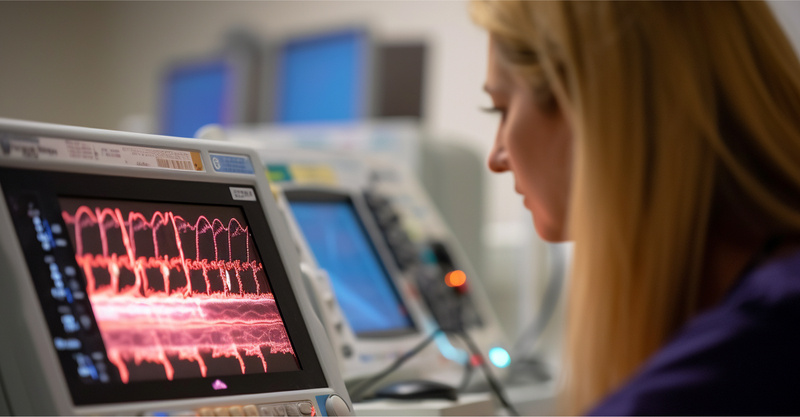Key Points
- Ultrasound scans are non-invasive tests that use sound waves to view the body's soft tissues, offering a safer alternative to X-rays due to the absence of radiation.
- They are most commonly used for pregnancy, but also diagnose and monitor various health conditions affecting organs such as the bladder, brain, gallbladder, kidneys, liver, ovaries, pancreas, spleen, thyroid, testicles, uterus, heart, and blood vessels.
- Ultrasounds can also guide surgeons during operations and medical procedures like biopsies.
- The preparation for an ultrasound depends on the area or organ being examined, but most require no preparation.
- Ultrasounds carry very few risks and allow patients to resume normal activities post-procedure, though some discomfort may be experienced during the scan.
An ultrasound scan is a non-invasive image test that uses sound waves to see soft tissues inside the body. Although ultrasound is the word that is commonly used, this test is also called sonography or ultrasonography. Common places where ultrasounds are used are the abdomen and heart, according to the Cleveland Clinic.
What is an Ultrasound?
Unlike X-rays, an ultrasound is a medical imaging test that uses high-frequency sound waves to view live images of the inside of the body. Ultrasound technology is similar to sonar or radar technology, according to Healthline. Ultrasounds use no radiation, which makes them the preferred image test for any condition that involves organs, vessels, and soft tissues—as well as pregnancy.
Why is an ultrasound performed?
When you think about an ultrasound, you might associate it with pregnancy. While it is true that ultrasounds are used often during pregnancy, they are also used to diagnose and monitor many health conditions. According to Healthline, your doctor may order an ultrasound to diagnose pain, swelling, or other symptoms that affect your internal organs. According to Healthline, some of the organs that ultrasounds are used on are:
-
Bladder
-
Brain (particularly in infants)
-
Gallbladder
-
Kidneys
-
Liver
-
Ovaries
-
Pancreas
-
Spleen
-
Thyroid
-
Testicles
-
Uterus
-
Heart
-
Blood vessels
An ultrasound can also be used to guide a surgeon during certain operations and medical procedures (such as biopsies). According to Healthline, some procedures an ultrasound is used for are:
-
View the uterus and ovaries during pregnancy and monitor the developing baby's health
-
Diagnose gallbladder disease
-
Evaluate blood flow in the heart or blood vessels
-
Guide a needle for biopsy or tumor treatment
-
Examine lumps in the breasts or testicles
-
Examine kidneys and ureters for kidney stones
-
Check the thyroid gland
-
Find genital and prostate problems
-
Diagnose a hernia
-
Asses the pancreas for inflammation
-
Assess joint inflammation (synovitis)
-
Evaluate metabolic bone disease
How is an Ultrasound Performed?
Before your ultrasound, you may be asked to change into a hospital gown. Sometimes, however, you can remain in your regular clothing. Most of the time, the ultrasound technician (also called a sonographer) will have you lie down on an exam table, with the section of your body exposed for the test.
An ultrasound technician will apply a lubricating gel to your skin, over the area that they want to ultrasound. This gel prevents friction and helps the ultrasound depict a clearer image.
The ultrasound wand (called a transducer or ultrasound probe) will look similar to a microphone and may vary in size. For pelvic ultrasounds (that look at the uterus, cervix, and ovaries) a transvaginal ultrasound probe is used. This type of ultrasound transducer looks like a long, thin probe and will be inserted into the vagina during the ultrasound. The ultrasound transducer will send high-frequency sound waves through your body during the test, but you won’t hear or feel anything, according to the Mayo Clinic. This is because the sound waves are too high of a pitch for the human ear to hear.
Healthline notes that depending on the area being examined, the ultrasound sonographer may ask you to change positions so they can have a better view of what they're looking at.
After your ultrasound, the gel will be cleaned off of your skin. An Ultrasound is usually a fast test—typically lasting less than 30 minutes, according to Healthline.
How do You Prepare for an Ultrasound?
How to prepare for an ultrasound will depend on the area or organ that is being examined—and most ultrasounds require no preparation at all, according to the Mayo Clinic.
-
For some abdominal ultrasounds, your healthcare provider may ask you to not eat any solid food for 8 to 12 hours before your ultrasound. Healthline notes that this is because undigested food can block the sound waves and make it difficult to get a clear view of the abdominal organs. Healthline also notes that this is usually not the case for pregnancy ultrasounds.
-
For some abdominal ultrasounds (especially those that look at the bladder), your healthcare provider may ask you to drink a lot of water and to hold your urine so that your bladder is full. Healthline notes that this can help your healthcare provider get the clearest image of your bladder.
-
For ultrasounds of the gallbladder, liver, pancreas, or spleen, Healthline notes that you may be asked to eat a fat-free meal the evening before your test and then avoid solid food on the day of the ultrasound (until after it is completed). You can continue to drink water and take your usual medications, they note.
-
Young children may need additional preparation, depending on what type of ultrasound they will have, according to Healthline.
Healthline recommends that when scheduling an ultrasound for yourself or your child, ask your doctor if there are any specific instructions you'll need to follow.
Risks of Having an Ultrasound
Having an ultrasound carries very few risks, according to Healthline. They note that, unlike X-rays or CT scans, ultrasounds use no radiation. For this reason, they are considered safe and are the preferred method for examining a developing fetus during pregnancy.
It is possible that you may experience mild discomfort during your ultrasound scan, according to the Mayo Clinic. They explain that this discomfort is usually from the mild pressure applied to your skin during the ultrasound scan. The ultrasound sonographer may have to push the transducer against your skin to see organs that are deep in the body. This is especially true for gallbladder ultrasounds, liver ultrasounds, and other abdominal ultrasounds, according to the Mayo Clinic.
If you are getting a transvaginal ultrasound, you may feel some slight discomfort according to the Mayo Clinic. During a transvaginal ultrasound, the ultrasound transducer is placed inside the vagina and may be moved around to see different structures of the pelvis. Transvaginal ultrasounds are usually not painful but may be uncomfortable, especially if you haven't previously had sex. It is important to communicate your concerns and comfort level with your sonogram technician both before and during your transvaginal ultrasound.
After Your Ultrasound
After your ultrasound, the ultrasound sonographer will clean the transducer gel off the area that it was used on and give you further instructions. If you had a transvaginal ultrasound, you may need to use a sanitary napkin, as the gel may leak for several hours afterward. Healthline notes that you can typically resume your normal activities after your ultrasound scan.
You can find a provider of lab tests and imaging like an ultrasound scan using Solv!
Frequently asked questions
What should you avoid before an ultrasound?
Before an abdominal ultrasound, Ciders Sinai recommends that you avoid eating or drinking for several hours before the scan. They note that this is because a full stomach can make it more difficult to obtain clear images of the internal organs. It's important to follow any specific instructions provided by the healthcare provider or imaging center to ensure the best possible results from the ultrasound.
Can you drink water before an ultrasound of the abdomen?
Yes, you can drink water before an abdominal ultrasound. In fact, for certain ultrasounds (like pelvic ultrasounds), Cedars Sinai notes that it is recommended to drink at least 32 ounces of water before the procedure. They note that this can help to fill the bladder and provide a clearer view of the pelvic organs and structures during the ultrasound scan.
What if I can't hold my pee before an ultrasound?
Ciders Sinai notes that some ultrasound imaging may require you to have a full or mostly full bladder. They note that it is okay for you to relieve yourself (urinate), as long as you continue to drink water until you arrive for your scan.
Can you eat and drink before your first ultrasound?
For some ultrasounds, you may be asked not to eat, according to Cedars Sinai. Some ultrasound imaging may require you to eat low-fat foods in the days leading up to your ultrasound scan. Your healthcare provider can give you specific instructions based on your situation and the type of ultrasound you will be getting.
Solv has strict sourcing guidelines and relies on peer-reviewed studies, academic research institutions, and medical associations. We avoid using tertiary references.


 LinkedIn
LinkedIn










